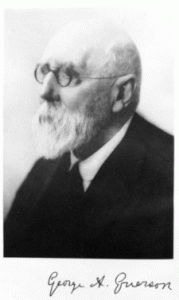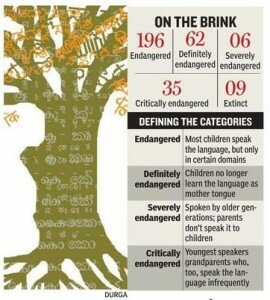Exploring the Languages of Sikkim

Based on Linguistic Survey of India report on Sikkim
Almost 50 years after Sir George Abraham Grierson carried out the only comprehensive study of Indian languages referred to at the national and international level from 1894-1927, the Registrar General, India through its Language Division has been involved in connecting the cords of Indian languages. Since sixth Five Year Plan, for nearly 30 years now, this little publicized and academically less understood organization has been rendering yeomen’s service to the country by carrying out this interdisciplinary survey with the help of linguists. Already due to urbanization, displacement of population due to industrialization and modernization and pressure of dominant languages smaller and marginalized languages are under threat. Unless a conscious effort is made to describe, revive and preserve them, valuable national heritage will be lost.

Sir George Abraham Grierson
Founder and former Director, Central Institute of Indian Languages (CIIL) Padmashree Prof D P Pattanayak writes in the foreword to the Part I of the report on Sikkim, “The States have boundaries whereas the languages don’t. This has different implications for states as well as languages. From idiolect to dialect, dialect to language, different kinds of contacts leading from bilingualism, trilingualism to multilingualism and creation of pidgins and creoles, are dimensions to be discovered by a linguistic survey. What is most important is the grammar of each of the languages and varieties concerned. It is to be understood that a linguistic survey opens up avenues for the study of language pedagogy, language and ethnicity, language and society, language and mind, language and communication and language and politics.”
As part of the continuing efforts to present the Language profile of the country State by State the survey operations in the state of Sikkim were started in 1995 and these continued upto 2000, covering the investigations on Bhotia and Tibetan, Lepcha, Limbu, Sherpa, Rai, Tamang, Newari, Gurung, Mangari, and Sunwar. In 2008, there was another visit for updating of the linguistic data and for collecting Sociolinguistic information for this volume.

India has the largest number of languages in danger of extinction (http://www.iipsenvis.nic.in/ncy09/Mar09/mar03.htm)
After Linguistic Survey of India (LSI) reports on Orissa, Dadra & Nagar Haveli, Sikkim made its way to be listed in the series in end 2009. This will be followed by subsequent presentation of LSI West Bengal, LSI-Bihar, LSI-Himachal Pradesh, LSI-Rajasthan (Part-II) and others. The Survey is planning thereafter to cover the Southern part and other states of Northeast.
The survey brings out the linguistic situation of Sikkim state in the historical, political and social background. The peculiarity of the linguistic composition of the state lies in the existence of Nepali, the only language of Indo-Aryan family, as the first most populous language amidst various Tibeto-Burman ethno-linguistic communities. Being the most populous language as well as the language used for education, administration etc., Nepali has emerged as the superposed language of the state. The immigrant Bhutias (the descendents of the Tibetan) has become the second populace followed by the other major settlers of the land originally inhabited by the Limbus, Lepchas and others. This background frames the existence of the groups and subgroups of Tibeto-Burman linguistic communities in the land of Sikkim- the Himalayan Queen.
Sir Grierson’s study gives an overall language profile of the pre-independent country in a totality but the coverage of languages under the Tibeto-Burman family was not as elaborate as the coverage of the Indo-Aryan family. The current LSI attempts to speak, among others, on the Tibeto-Burman languages of the Eastern part of the country. It deals with important languages of the state of Sikkim. It gives a wonderful insight into the linguistic picture of Sikkim whether you are a researcher, planner or simply a language enthusiast.
The next part of the story will be published on Monday, 23rd of May 2011
Related Stories:
Bilingualism in Sikkim
Treatment of Sikkim’s language in current LSI
Sikkim and its languages-I
Treatment of Sikkim’s languages by Grierson and others
Comment
Leave a Reply
- China can learn preserving languages from India
- Exploring Sikkim- A photo story
- Sikkim BJP demands Nepali keypads in mobile
- Two Australian from Mogo Zoo, for exploring the possibilities
- Sikkim the “Little Miracle State”
Is Delhi Police friendly towards the people of North East states?
- Can't Say (100%)
- Yes (0%)
- No (0%)


Bishnu
September 6, 2011 at 5:05 pm
सर्व शिक्षा मात्री भाषामा नहुनु सुक्ष्म गतिमा दास हुनु हो |
माताको दुध शिशुलाई शिक्षा मात्री भाषामा प्रभाव पर्छ श्रीष्टिलाई प्रकाशको गतिमा |